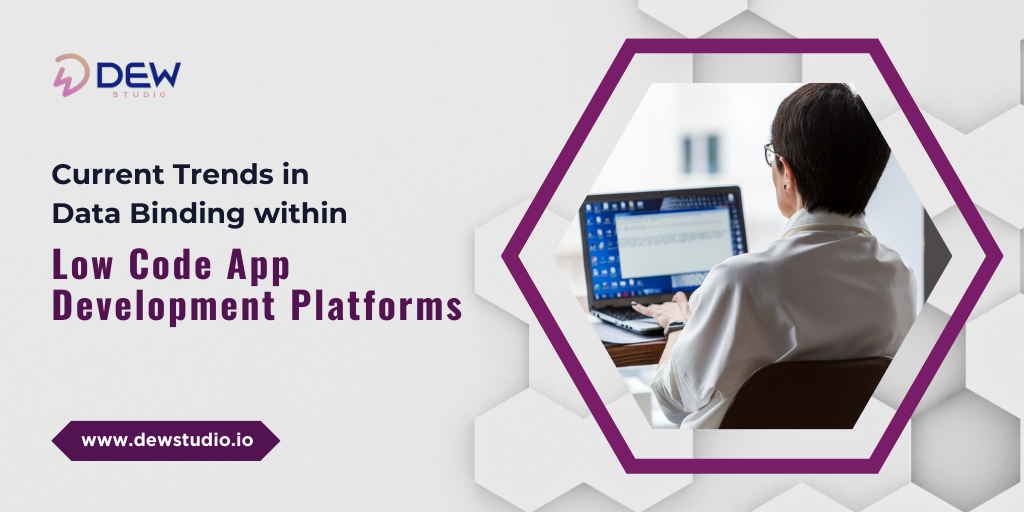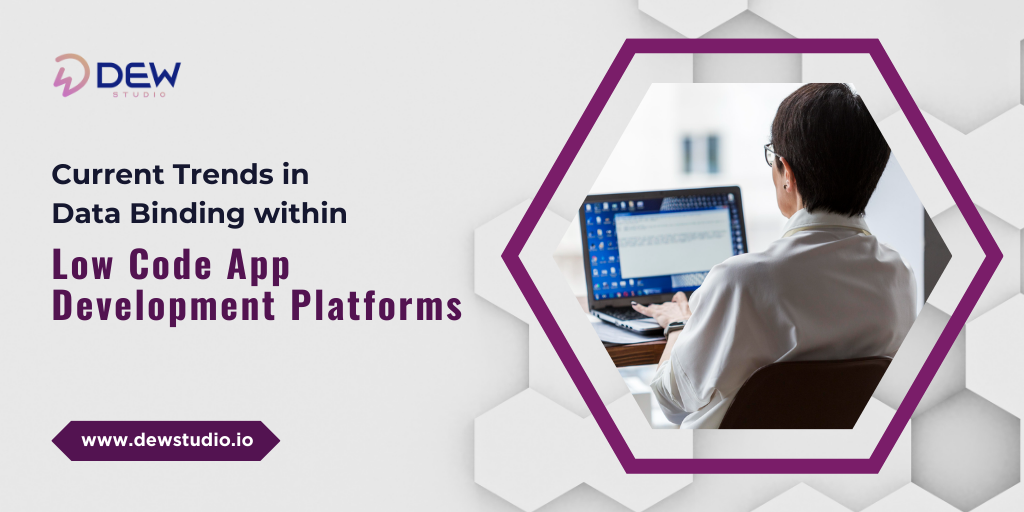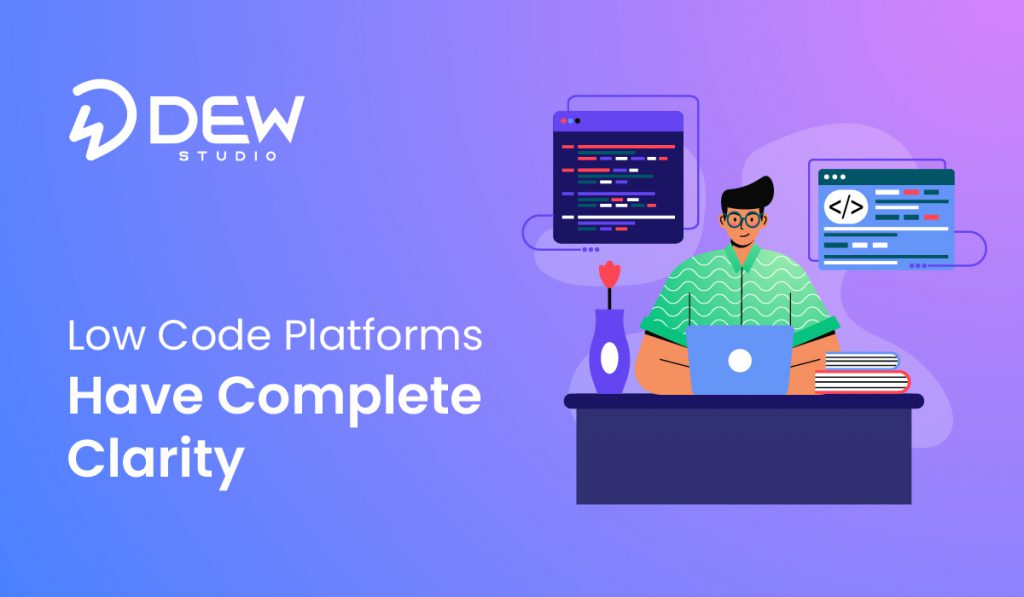
Have you ever wanted to develop an application but didn’t have the coding skills to bring your vision to life?
If so, you’re not alone. In recent years, there has been a surge in demand for low code app development platforms that allow users to build apps quickly and easily without extensive coding knowledge. Central to the success of these platforms is the pivotal feature of data binding. Through data binding, a seamless connection is established between the data model and the user interface, facilitating real-time updates and ensuring a dynamic user experience.
Did you know that according to recent studies, the low code development market is expected to reach a value of $45.5 billion by 2025, with a compound annual growth rate (CAGR) of 28%? This phenomenal growth reflects the increasing adoption of low code platforms as businesses and developers seek efficient solutions for application development.
This combination of user-friendly development and current data binding has revolutionized the app development market, making it more accessible and helping developers to create engaging and dynamic applications.
In this blog post, we will explore the current trends in data binding within low code app development platforms and how they are shaping the landscape of application development.
Evolution of Data Binding in Low Code Platforms
Data binding in low code platforms has evolved significantly over the years, moving from simple one-way binding to more advanced two-way binding capabilities.
- One-way binding involves pushing data updates from the data source to the UI components, while two-way binding allows bidirectional communication between the data model and the interface elements.
- This evolution has empowered developers to build dynamic and interactive applications with minimal effort, making low code platforms a go-to choice for many organizations looking to streamline their development processes.
Example: Two-way binding in a customer relationship management (CRM) application enables real-time synchronization of customer data between the backend database and the user interface, allowing sales teams to access and update customer information seamlessly.
Top 5 Trends in Data Binding within Low Code App Development Platforms
Now, lets read more about the top 5 trends in data binding within Lop Code App Development Platform.
Microservices Architecture Integration
One of the current trends in data binding within low code platforms is the integration of microservices architecture. Microservices architecture involves breaking down large, monolithic applications into smaller, independent services that communicate with each other through APIs.
- By incorporating microservices architecture into low code platforms, developers can leverage data binding to establish seamless communication between various services and create modular, scalable applications.
- This trend not only enhances the performance and flexibility of applications but also accelerates the development process by enabling developers to work on individual services concurrently.
For Example: Data binding in a retail application integrates microservices for inventory management, order processing, and customer tracking, enabling seamless communication and real-time updates across different service modules.
Real-Time Data Synchronization
Another emerging trend in data binding within low code platforms is real-time data synchronization. With the increasing demand for applications that provide instant updates and notifications, developers are focusing on implementing real-time data binding mechanisms that ensure data changes are instantly reflected across all connected devices.
- This trend is driven by the growing popularity of collaborative and interactive applications, such as project management tools and messaging apps, which require real-time communication between users.
- By integrating real-time data synchronization into low code platforms, developers can create responsive and engaging applications that meet the evolving needs of users.
Example: Real-time data binding in a ride-sharing app ensures instant synchronization of driver availability, trip requests, and passenger location, delivering a seamless and responsive experience for both drivers and passengers.
Support for Multiple Data Sources
Low code platforms are continually expanding their support for multiple data sources, allowing developers to bind data from various sources, such as databases, APIs, and external services. This trend enables developers to create data-driven applications that aggregate and display information from different sources in a unified interface.
- With the ability to bind data from diverse sources, developers can build powerful applications that provide users with comprehensive and personalized experiences.
- Moreover, the seamless integration of multiple data sources simplifies the development process and reduces dependency on manual data manipulation, enhancing the efficiency and accuracy of application development.
Example : A healthcare management application use data binding to integrate patient records from electronic health records (EHR) systems, medical imaging databases, and wearable health devices to provide healthcare professionals with a holistic view of patient health data.
Declarative Data Binding Syntax
Declarative data binding syntax is gaining traction in low code platforms as a user-friendly approach to defining data bindings within applications. Unlike imperative data binding, which requires developers to specify how data should be bound to UI elements, declarative data binding allows developers to define bindings using a simpler and more intuitive syntax.
- This trend simplifies the development process by reducing the amount of code required to establish data bindings and improving the readability and maintainability of applications.
- By adopting declarative data binding syntax, developers can expedite the development cycle and focus on building robust and scalable applications.
Example: Declarative data binding in a content management system (CMS) allows content creators to define dynamic data bindings for website components, such as articles, images, and user profiles, without the need for complex coding, empowering them to create compelling and personalized web content.
Integration with IoT and AI Technologies
Low code platforms are increasingly incorporating data binding capabilities to support integration with emerging technologies such as Internet of Things (IoT) and Artificial Intelligence (AI). By enabling developers to bind data from IoT devices and AI models to their applications, low code platforms empower them to create innovative and intelligent applications that use real-time data streams and advanced analytics.
- This trend opens up new possibilities for developers to build smart products and services that utilize machine learning algorithms and sensor data, transforming the way users interact with applications.
- With seamless integration of IoT and AI technologies through data binding, developers can drive innovation and create cutting-edge solutions that cater to a wide range of industries and use cases.
Example: Data binding in a smart home automation app integrates IoT devices, such as thermostats and security cameras, enabling homeowners to monitor and control their home environment remotely through a seamless and intuitive user interface.
What’s Last?
The current trends in Data binding within low code app development platforms are reshaping the way applications are built and deployed. We are living in an era where speed and efficiency are paramount, and these trends offer the perfect solution for developers looking to meet the demands of businesses across various industries.
Looking for the best low code app development services with the potential of data binding?
Dew Studio offers developers the flexibility and scalability needed to create sophisticated applications. Signup at DewStudio today and experience the power of low-code app development. With a focus on growth, TechRev helps your business to create customized applications with ease.


